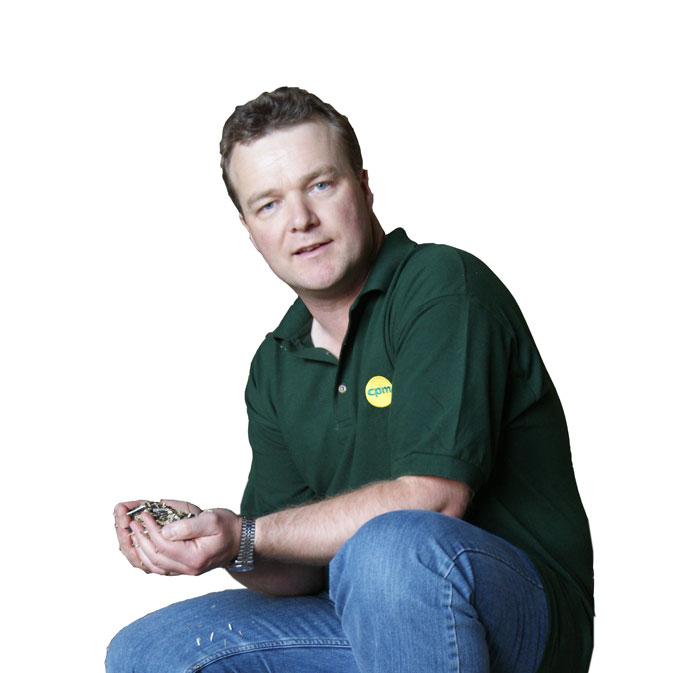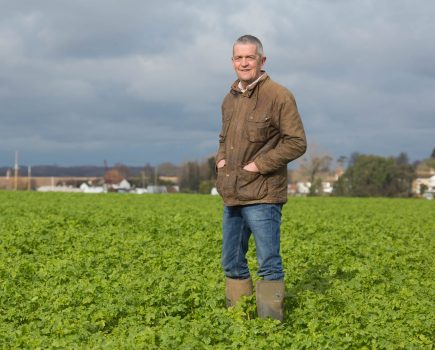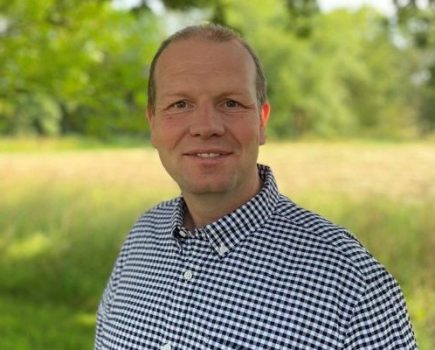Some people dream about their ideal football team. Others about the perfect dinner guests to wow their friends.
Call me sad, but my dream team is a group of top scientists who come together to discuss a key arable topic. At the Arable Conference at Cereals this year, I had the chance to do exactly that. I put together a panel of genetic experts, and the topic I asked them to address was innovations in plant breeding – whether they could actually feed the world.
It was a bit of self-indulgence really, but I have to say it was one of the most inspiring and enlightening sessions I think I’ve ever been to at Cereals. First to the podium to present his insight was Prof Mike Bevan of John Innes Centre (JIC). He pointed out we’re living in extraordinary times, developing technologies that are literally transforming our lives.
At the heart of what they do at JIC is to unravel DNA. The incredible achievement over the past five years is what scientists have done with wheat. The wheat genome is five times longer and three times more complicated than the human genome, so the scale of the task is simply staggering. But using sequencing machines and supercomputers, scientists now have the complete “toolkit” they need to understand the genetic bases of wheat traits to to breed better crops more quickly.
What’s more, it’s accelerating as the process gets faster and cheaper. And now JIC, with its partners, is launching the next chapter – the boldly titled ‘Designing Future Wheats’ programme. Through genomics, scientists can take an isolate of yellow rust, for example, identify the genes the crop will need to be resistant to it, and deliver to the breeder a pre-breeding line that makes it happen in commercial lines.
Next up was Dr Charlie Baxter, head of trait development at Syngenta. He spoke of the two revolutions that have changed the face of plant breeding. The first was industrialisation – upscaling of nurseries during the 1970s and 80s that allowed breeders to create more crosses and select faster for the traits they wanted. Then there was the revolution in DNA markers that brought a step change in how the breeder could select a trait at an early stage.
Once a novel technology, it’s now used on a daily basis – every year, Syngenta scientists take 8-10M samples and analyse the DNA, producing hundreds of millions of data points for the breeders to use.
And we’re now on the cusp of a third revolution, said Charlie Baxter, based on data analytics that streamlines the process of sifting through these vast datasets – the quest for diversity, for remarkable genetic ability, is no longer simply about the biology of crossing plants.
This process itself has taken a dramatic step forward with genome editing. Just like a magazine editor may take a document, cut out bits and rejig the words to make a story that lifts off the page, so a scientist can now edit the genome of an organism to create a desired variation within a species. You can more efficiently cross two varieties to maximise the genetic variation that they possess, or edit the DNA of a specific gene to prevent the plant being attacked by a pathogen.
There’s already over 3000ha of the first edited oilseed rape variety across farms in the US, and the produce is already on sale, while trials in rice are also underway.
NIAB technical director Bill Clark pointed out the scale of the challenge breeders face – food production has to double by 2050. At best, the yield of rice and maize varieties are improving by 1.2-1.3% per year, so the rate has to double if breeders are to achieve their aim, and wheats on the AHDB Recommended List are improving by just 0.5% per year.
But then he pointed out that the world wheat yield record has just been beaten in New Zealand with a crop of Oakley – a “dirty” variety that’s ten years’ old and a good 5% lower yielding than current UK RL list leaders.
Bill Clark picked out some wheat-related issues scientists could address through technology that would bring about a step change in on-farm wheat performance – take-all, nitrogen and water use efficiency and the rate of photosynthesis, for example. Then he described NIAB’s Synthetic and MAGIC wheat projects that are reintroducing massive diversity back into wheat. By comparison, breeders are currently fishing for genetic advancement in a tiny pool of what is in reality a vast ocean of possibilities.
In truth, there are unimaginably vast advances in plant genetics currently taking place in nurseries, in petri dishes and at the end of a microscope, directed and informed by data crunched by supercomputers. They’re happening here in the UK, guided by some of the best brains in the world. There will be numerous opportunities to take these advances and shape them into physical, tangible progress in the field.
As Northants grower Andrew Pitts pointed out in the discussion, these advances have to be farmer-proof. So wouldn’t it be great to be part of the process that farmer-proofs the technology as it rolls out? That’s one dream that’s really worth turning into reality.
Tom Allen-Stevens has a 170ha arable farm in Oxon and also dreams of a slug that feasts exclusively on blackgrass.




